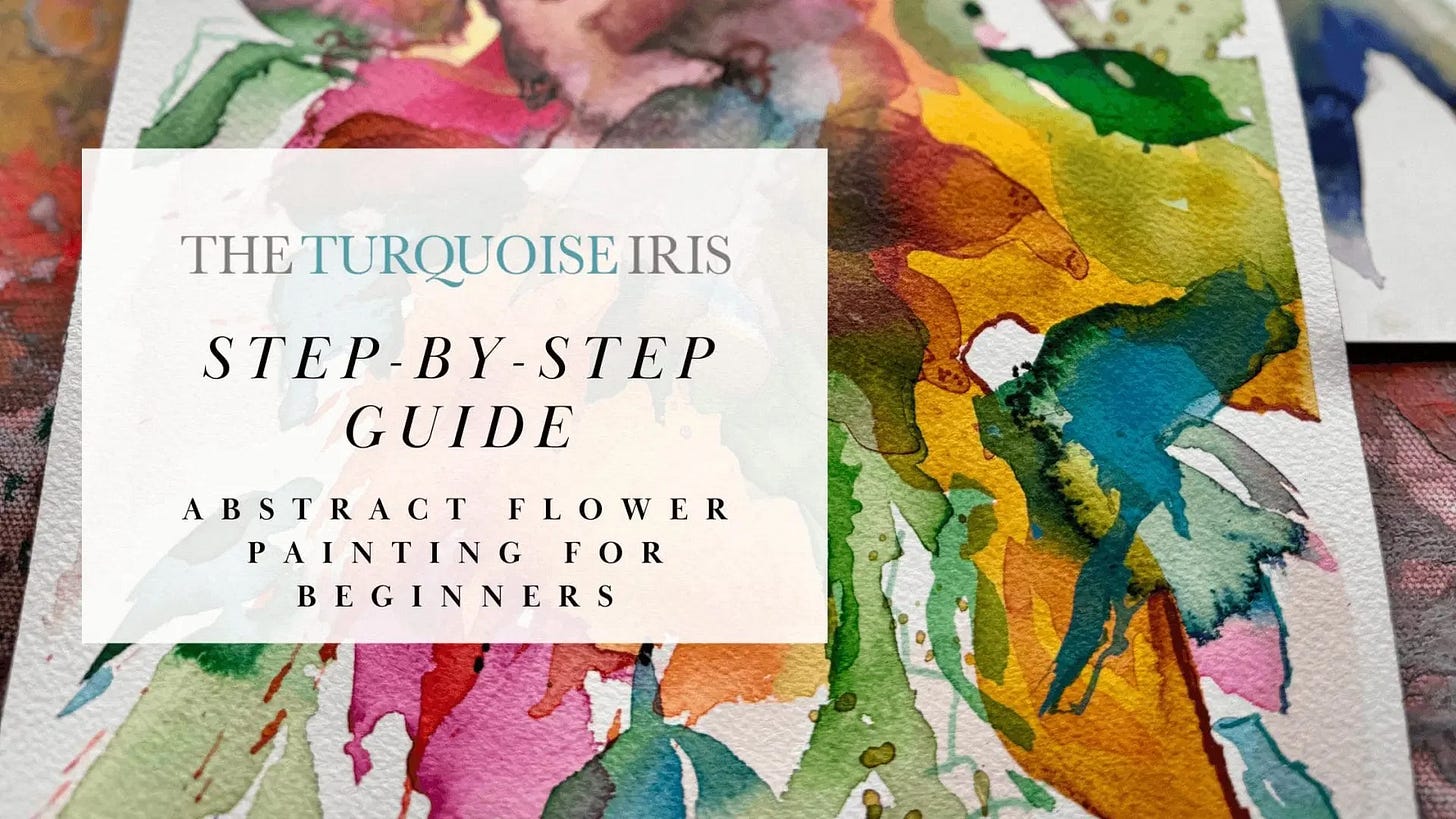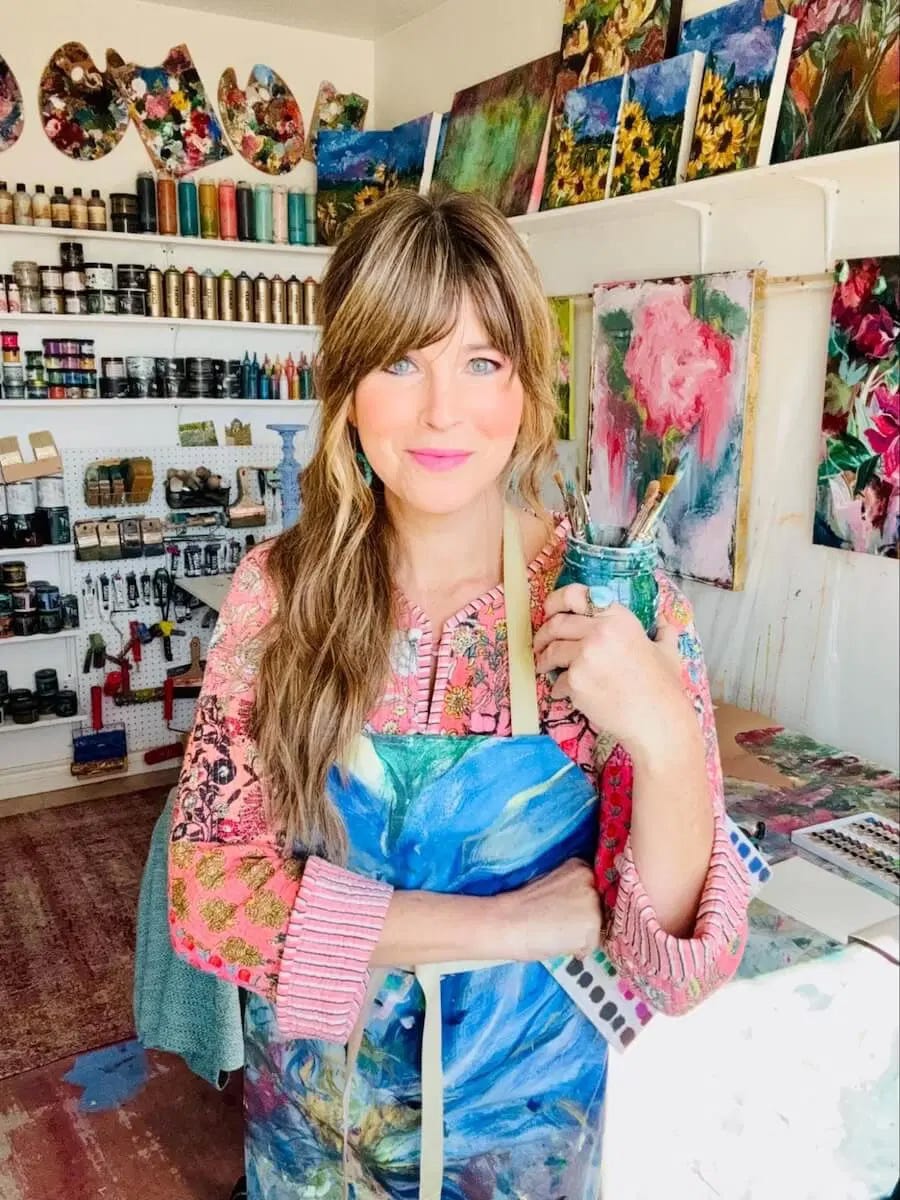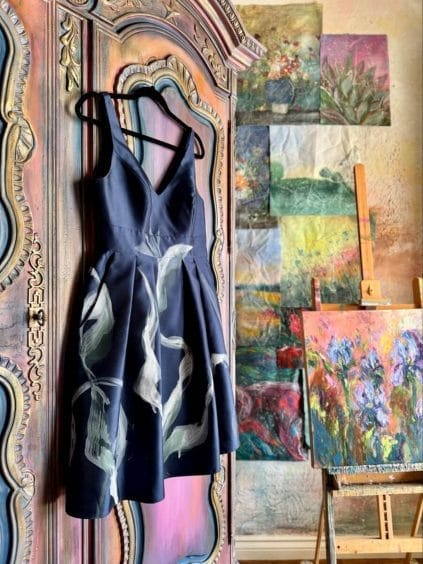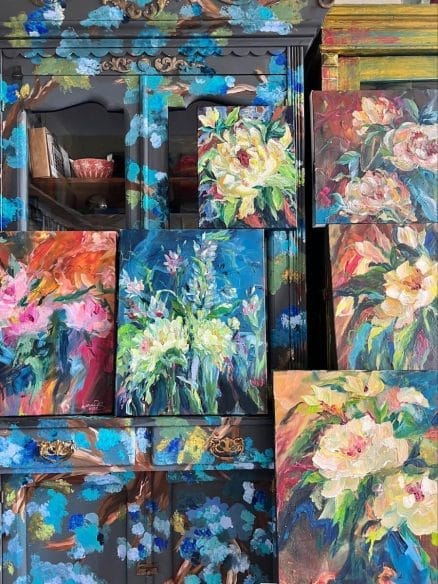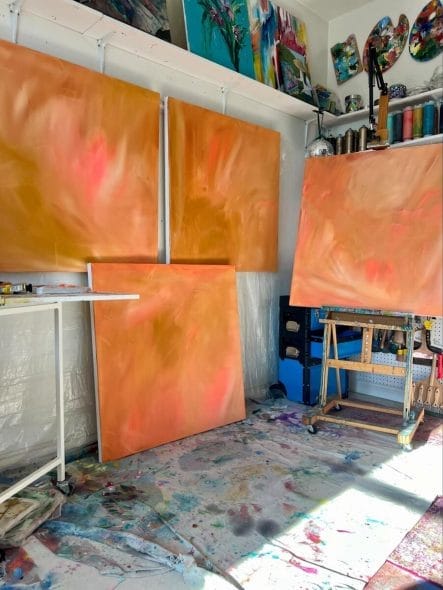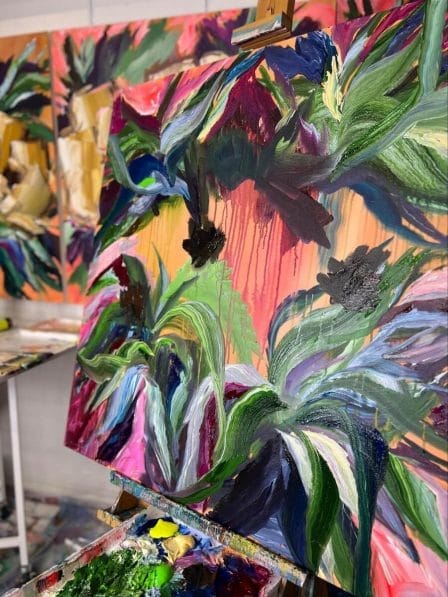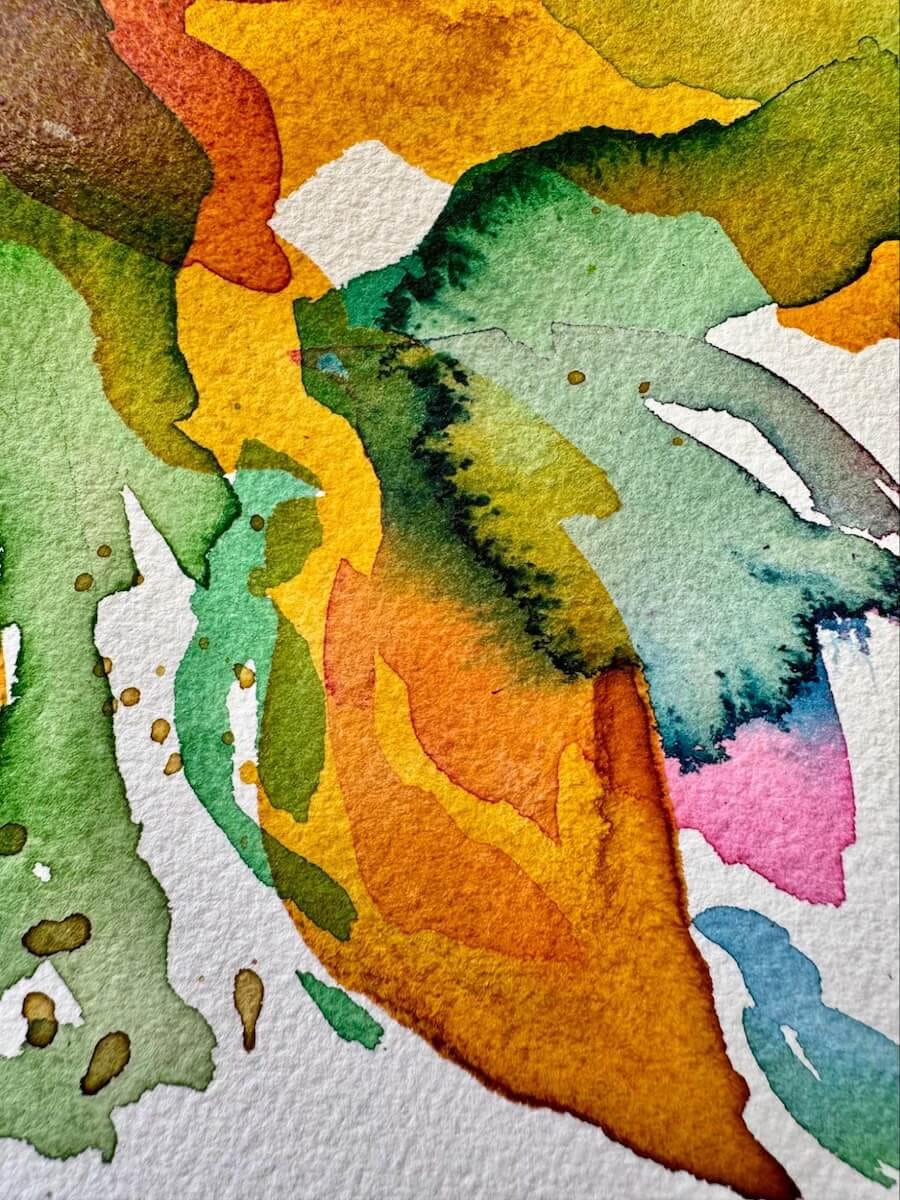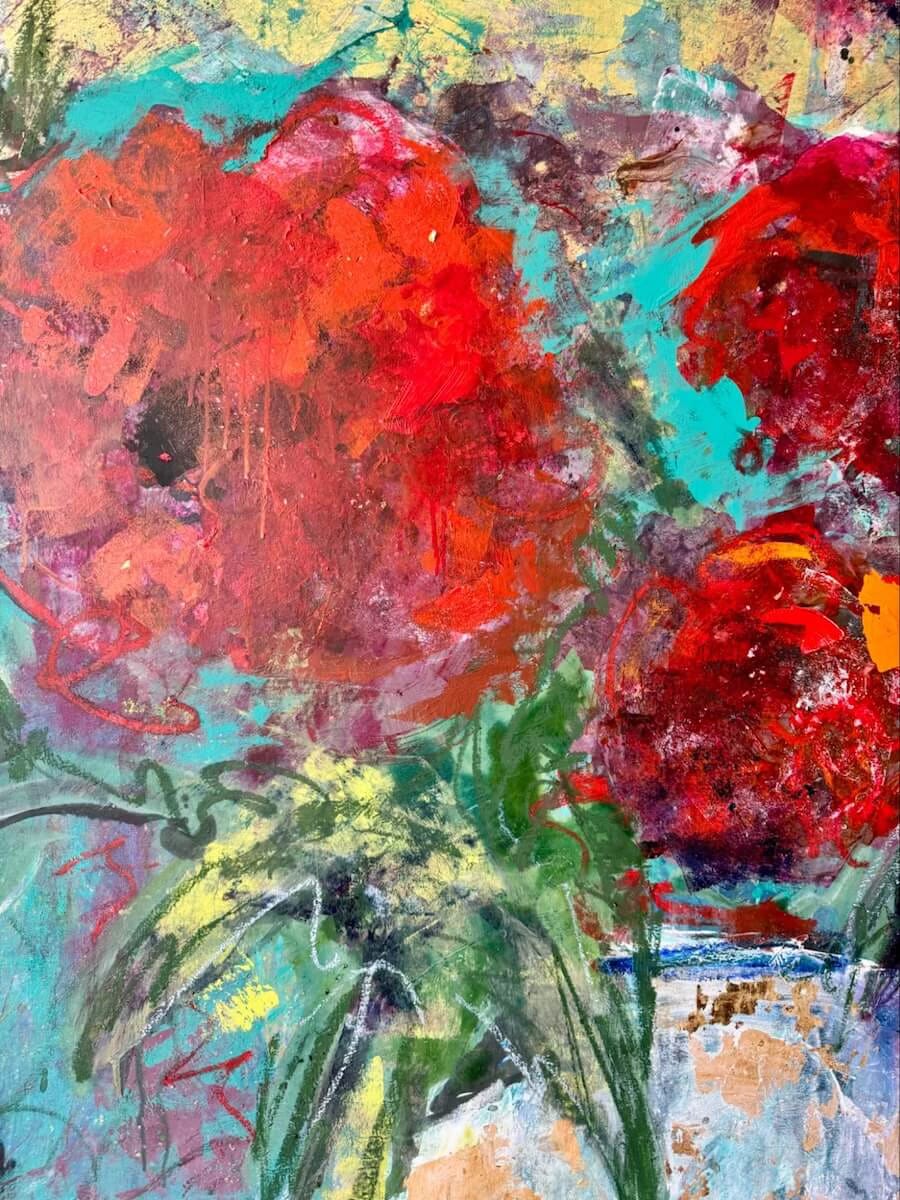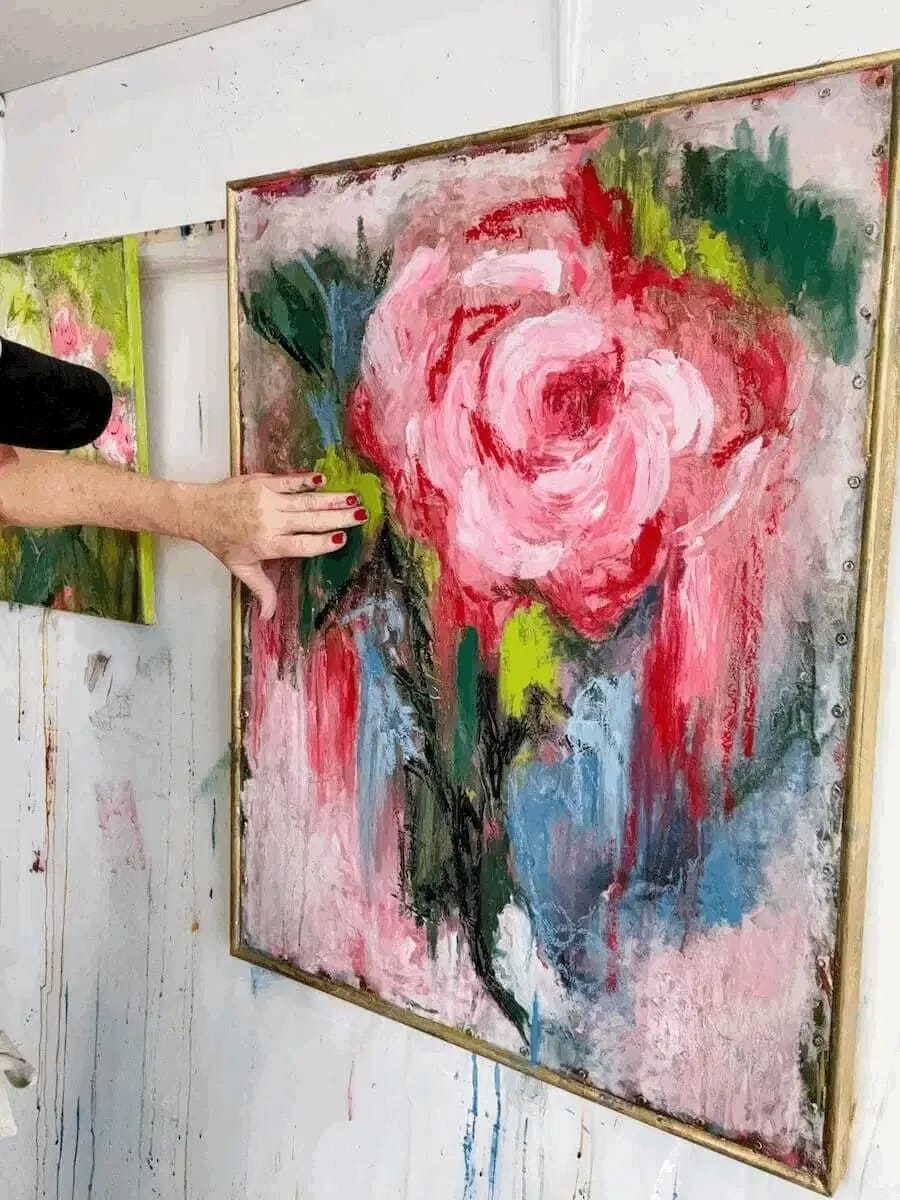A Step-by-Step Guide to Abstract Flower Painting for Beginners
Need a place to start?
If you’ve ever wanted to paint vibrant, expressive, abstract flower art but weren’t sure where to start, this guide is for you! Whether you’re an experienced artist looking to loosen up or a beginner eager to explore abstract techniques, I’ll walk you through the process of creating a stunning floral masterpiece.
Flowers are a timeless symbol of beauty and life, and their colorful, organic shapes make them a perfect subject for abstract painting. The best part? There’s no need for perfection here—just creativity, curiosity, and a willingness to play with color and form.
Let’s get started!
Gather Your Abstract Flower Painting Supplies
Before you begin, make sure you have everything you need.
Paint
Select colors that inspire you! You’ll also want white for highlights and a darker shade for depth and contrast.
I’ve been using DIY Furniture Paint for years, but lately, I’ve fallen in love with Painterly—a richly pigmented, water-activated paint made with Japanese pigments. It’s non-acrylic, ultra-blendable, and perfect for artists who love texture and movement. I still love my trusted DIY Furniture Paint, but Painterly has quickly become my go-to for expressive, abstract work. If you’re more of an acrylic person, then this is for you, also! You simply cannot go wrong with yummy acrylics that dry quickly.
Brushes and Tools
Your brush choice will influence texture and movement. Here are my favorites:
The VIP Brush by Paint Pixie is my secret weapon for fast backgrounds.
The Water Girl continuous spray bottle helps create stunning, organic textures and seamless blends.
Check out my curated list of must-have supplies in my Benable list.
Canvas (or Alternative Surfaces!)
You don’t have to stick to a traditional canvas! I’ve painted on furniture, drop cloths, leather journals, and even clothing. No rules—just creativity!
Step-by-Step Guide to Abstract Flower Painting
1. Find Floral Inspiration
Spend time outside observing flowers in nature! Take reference photos, study textures, and notice how light falls on petals and leaves. If you need reference photos, check out The Turquoise Iris Journal, where nature always finds its way on the pages.
2. Study Shape, Form, and Contrast
Abstract art is all about interpreting the subject through shapes, shadows, and colors. Even in an abstract painting, understanding the general structure of flowers helps create depth and balance. Identify highlights, shadows, and the overall composition before you begin.
3. Start with an Underpainting
Before adding details, lay down a base layer of color. This underpainting sets the tone and depth of your piece. I love using bold colors for this step—it adds vibrancy to the final painting!
4. Block Out Your Shapes and Shadows
Using a larger brush, roughly sketch in where your flowers will go. Focus on the gaps between blooms and how they interact with each other. Don’t stress about perfection—just capture the essence of the composition.
5. Add Variety for Interest
Ever seen a painting that feels a little…flat? The key to visual interest is variety! Experiment with:
Color: Add different shades and tones for depth.
Brushstrokes: Use a mix of thick, bold strokes and delicate, wispy ones.
Texture: Layer your paint, scratch into it, or use your fingers!
6. Don’t Be Afraid to Use LOTS of Paint
One of the biggest mistakes beginners make is not using enough paint! Abstract art thrives on rich, layered color. Load up your brush and be generous—you can always blend and adjust as you go.
7. Go with the Flow
Art is about the process, not just the final product. Let your intuition guide your brushstrokes. Be open to surprises and embrace unexpected textures and color blends.
8. Embrace Mistakes
Mistakes? They’re just creative detours! During a live tutorial, I once messed up a paint inlay—but instead of starting over, I leaned into the imperfections. The result? A layered, vintage effect that looked intentional and added character to the piece.
9. Be Bold—Don’t Hold Back!
Abstract flower painting isn’t about capturing reality—it’s about evoking feeling. If you try to make a “perfect” flower, you might miss out on the magic of expressive, fearless creativity. Lean into your unique style!
10. Make It Your Own
The best thing about abstract art? No two paintings are the same! Let your instincts guide you. Play with colors that excite you, shapes that intrigue you, and techniques that feel right. There’s no wrong way to do this!
Keep Growing as an Artist
If you loved this tutorial and want more step-by-step guidance, join my Creative Connection coaching group! Inside, you’ll find:
Exclusive monthly art tutorials
Personalized feedback on your work
Community challenges, contests, and expert training
Support from a community of like-minded creatives
When you join Creative Connection, you’re not just learning to paint—you’re gaining a creative family .
Join the Creative Connection today!
Happy painting!
Dionne
JOIN THE EMAIL LIST FOR UPDATES!


